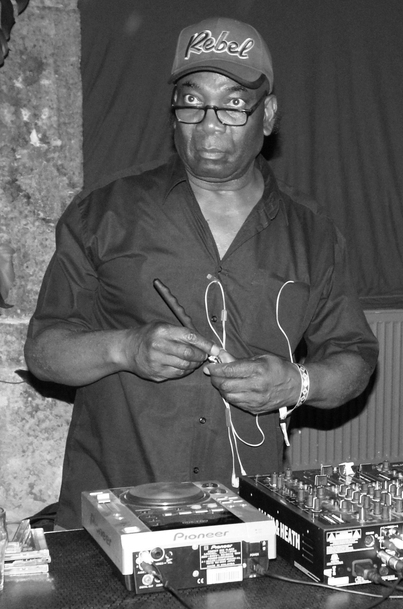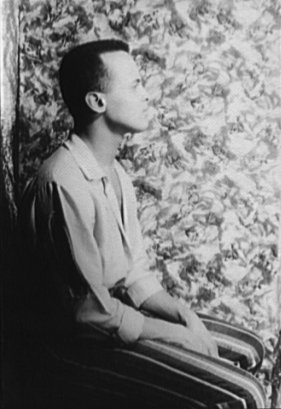|
Brain Damage (album)
''Brain Damage'' is the third studio album by Barbadian-British reggae musician Dennis Bovell, released in 1981 by Fontana Records. His first solo album under his own name, following two dub albums released as Blackbeard, it was Bovell's first recording at his South London-based Studio 80. Having begun to feel that reggae had not progressed as much as he would have liked, he conceived ''Brain Damage'' as an attempt to fuse the genre with numerous rhythmic styles from Europe, America, Africa and the Caribbean to highlight the genre's flexibility. The musician intended not to explore the international rhythms in a standard way but to take them to what he perceived as musical extremes. The direction was also inspired by the wide array of people in his audience. The album fuses reggae with styles such as rock, R&B, calypso, soca, disco, boogie-woogie and jazz, with Bovell providing mixing, production and most of the instrumentation. A second disc of instrumental dub tracks also fe ... [...More Info...] [...Related Items...] OR: [Wikipedia] [Google] [Baidu] |
Dennis Bovell
Dennis Bovell (born 22 May 1953Huey, Steve"Dennis Bovell Biography" Allmusic. Retrieved 27 December 2014.) is a Barbados-born reggae guitarist, bass player and record producer, based in England. He was a member of the British reggae band Matumbi, and released dub-reggae records under his own name as well as the pseudonym Blackbeard.Thompson, Dave (2002), "Reggae & Caribbean Music", Backbeat Books, . He is most widely known for his decades-spanning collaborations with Linton Kwesi Johnson. Biography Born in Saint Peter, Barbados, in 1953, Bovell moved to South London in 1965 and became immersed in Jamaican culture, particularly dub music, setting up his own Jah Sufferer sound system.Larkin, Colin (1998), ''The Virgin Encyclopedia of Reggae'', Virgin Books, , pp. 35–36. Running the sound system brought trouble from the police and Bovell was imprisoned for six months on remand, but was later released on appeal. Bovell was friends at school with future rock musicians includin ... [...More Info...] [...Related Items...] OR: [Wikipedia] [Google] [Baidu] |
Matumbi (band)
Matumbi were one of the top British reggae bands of the 1970s and early 1980s, and are best known as the first successful band of guitarist and record producer Dennis Bovell. History Matumbi formed in 1971 in South London, with a line-up of Tex Dixon (vocals), Euton Jones (drums), Dennis Bovell (guitar), Errol Pottinger (guitar), Eaton "Jah" Blake (bass guitar), Bevin Fagan (vocals), and Nicholas Bailey (vocals, later better known as Nick Straker).Larkin, Colin (1998), ''The Virgin Encyclopedia of Reggae'', Virgin Books, , p. 187. In the early 1970s, they acted as a backing band to touring Jamaican musicians. In 1973, they opened for The Wailers at the Ethiopian famine relief concert in Edmonton, where much to their embarrassment they went down better than the headliners, Bovell later saying: "The press thought we were much better, and we felt terrible because they were our heroes." Matumbi signed to Trojan Records, and had a major breakthrough in 1976, when their version of Bob D ... [...More Info...] [...Related Items...] OR: [Wikipedia] [Google] [Baidu] |
Afrobeat
Afrobeat is a Nigerian music genre that involves the combination of West African musical styles (such as traditional Yoruba music and highlife) and American funk, jazz, and soul influences, with a focus on chanted vocals, complex intersecting rhythms, and percussion.Grass, Randall F. "Fela AnikulaThe Art of an Afrobeat Rebel". ''The Drama Review: TDR''. MIT Press. 30: 131–148. The style was pioneered in the 1960s by Nigerian multi-instrumentalist and bandleader Fela Kuti, who is responsible for popularizing the style both within and outside Nigeria. Distinct from Afrobeat is Afrobeats – a sound originating in West Africa in the 21st century, one that takes in diverse influences and is an eclectic combination of genres such as hip hop, house, jùjú, ndombolo, R&B and soca. The two genres, though often conflated, are not the same. History Afrobeat was developed in Nigeria in the late 1960s by Fela Kuti who, with drummer Tony Allen, experimented with different c ... [...More Info...] [...Related Items...] OR: [Wikipedia] [Google] [Baidu] |
Funk
Funk is a music genre that originated in African American communities in the mid-1960s when musicians created a rhythmic, danceable new form of music through a mixture of various music genres that were popular among African Americans in the mid-20th century. It de-emphasizes melody and chord progressions and focuses on a strong rhythmic groove of a bassline played by an electric bassist and a drum part played by a percussionist, often at slower tempos than other popular music. Funk typically consists of a complex percussive groove with rhythm instruments playing interlocking grooves that create a "hypnotic" and "danceable" feel. Funk uses the same richly colored extended chords found in bebop jazz, such as minor chords with added sevenths and elevenths, or dominant seventh chords with altered ninths and thirteenths. Funk originated in the mid-1960s, with James Brown's development of a signature groove that emphasized the downbeat—with a heavy emphasis on the first bea ... [...More Info...] [...Related Items...] OR: [Wikipedia] [Google] [Baidu] |
European Music
The culture of Europe is rooted in its art, architecture, film, different types of music, economics, literature, and philosophy. European culture is largely rooted in what is often referred to as its "common cultural heritage". Definition There were a great number of perspectives which can be taken on the subject, it is impossible to form a single, all-embracing conception of European culture. Nonetheless, there are core elements which are generally agreed upon as forming the cultural foundation of modern Europe. One list of these elements given by K. Bochmann includes:K. Bochmann (1990) ''L'idée d'Europe jusqu'au XXè siècle'', quoted in Berting (2006:52). Cf. Davies (1996:15): "No two lists of the main constituents of European civilization would ever coincide. But many items have always featured prominently: from the roots of the Christian world in Greece, Rome and Judaism to modern phenomena such as the Enlightenment, modernization, romanticism, nationalism, liberalism, ... [...More Info...] [...Related Items...] OR: [Wikipedia] [Google] [Baidu] |
African Music
Given the vastness of the African continent, its music is diverse, with regions and nations having many distinct musical traditions. African music includes the genres amapiano, Jùjú, Fuji, Afrobeat, Highlife, Makossa, Kizomba, and others. The music and dance of the African diaspora, formed to varying degrees on African musical traditions, include American music like Dixieland jazz, blues, jazz, and many Caribbean genres, such as calypso (see kaiso) and soca. Latin American music genres such as cumbia, conga, rumba, son cubano, salsa music, bomba, samba and zouk were founded on the music of enslaved Africans, and have in turn influenced African popular music. Like the music of Asia, India and the Middle East, it is a highly rhythmic music. The complex rhythmic patterns often involving one rhythm played against another to create a polyrhythm. The most common polyrhythm plays three beats on top of two, like a triplet played against straight notes. Sub-Saharan African m ... [...More Info...] [...Related Items...] OR: [Wikipedia] [Google] [Baidu] |
Caribbean Music
Caribbean music genres are very diverse. They are each synthesis of African, European, Arab, Asian, and Indigenous influences, largely created by descendants of African slaves (see Afro-Caribbean music), along with contributions from other communities (such as Indo-Caribbean music). Some of the styles to gain wide popularity outside the Caribbean include, bachata, merengue, palo, mambo, denbo, baithak gana, bouyon, cadence-lypso, calypso, soca, chutney, chutney-soca, compas, dancehall, jing ping, parang, pichakaree, punta, ragga, reggae, dembow, reggaeton, salsa, soca, and zouk. Caribbean music is also related to Central American and South American music. The history of Caribbean music originates from the history of the Caribbean itself. That history is one of the native land invaded by outsiders; violence, slavery, and even genocide factor in. Following Christopher Columbus' 1492 landing, Spain claimed the entire region as its own. That didn't sit well with either the nat ... [...More Info...] [...Related Items...] OR: [Wikipedia] [Google] [Baidu] |
Blues
Blues is a music genre and musical form which originated in the Deep South of the United States around the 1860s. Blues incorporated spirituals, work songs, field hollers, shouts, chants, and rhymed simple narrative ballads from the African-American culture. The blues form is ubiquitous in jazz, rhythm and blues, and rock and roll, and is characterized by the call-and-response pattern (the blues scale and specific chord progressions) of which the twelve-bar blues is the most common. Blue notes (or "worried notes"), usually thirds, fifths or sevenths flattened in pitch, are also an essential part of the sound. Blues shuffles or walking bass reinforce the trance-like rhythm and form a repetitive effect known as the groove. Blues as a genre is also characterized by its lyrics, bass lines, and instrumentation. Early traditional blues verses consisted of a single line repeated four times. It was only in the first decades of the 20th century that the most common current str ... [...More Info...] [...Related Items...] OR: [Wikipedia] [Google] [Baidu] |
Pop Music
Pop music is a genre of popular music that originated in its modern form during the mid-1950s in the United States and the United Kingdom. The terms ''popular music'' and ''pop music'' are often used interchangeably, although the former describes all music that is popular and includes many disparate styles. During the 1950s and 1960s, pop music encompassed rock and roll and the youth-oriented styles it influenced. ''Rock'' and ''pop'' music remained roughly synonymous until the late 1960s, after which ''pop'' became associated with music that was more commercial, ephemeral, and accessible. Although much of the music that appears on record charts is considered to be pop music, the genre is distinguished from chart music. Identifying factors usually include repeated choruses and hooks, short to medium-length songs written in a basic format (often the verse-chorus structure), and rhythms or tempos that can be easily danced to. Much pop music also borrows elements from other styles ... [...More Info...] [...Related Items...] OR: [Wikipedia] [Google] [Baidu] |
Janet Kay
Janet Kay Bogle (born 17 January 1958) is an English actor and vocalist, best known for her 1979 lovers rock hit "Silly Games". Biography Janet Kay Bogle was born in Willesden, North West London. She was discovered singing impromptu at a rehearsal studio by Tony "Gad" Robinson, the keyboardist from Aswad, who recommended Kay to Alton Ellis. The Jamaican-born Ellis, a successful rocksteady vocalist, had relocated permanently to London, where he continued to be involved with reggae music and was looking for a female vocalist to record a reggae cover of Minnie Riperton's song "Lovin' You". In 1978 Kay recorded " I Do Love You" and "That's What Friends Are For". The single "Silly Games", written and produced by Dennis Bovell, was released in 1979 and became a hit across Europe, reaching No. 2 in the UK Singles Chart. The chart success of "Silly Games" led to Kay appearing on ''Top of the Pops'', then the BBC's flagship music programme. She played the character Angel in the UK sitc ... [...More Info...] [...Related Items...] OR: [Wikipedia] [Google] [Baidu] |
Lovers Rock
Lovers' rock is a style of reggae music noted for its romantic sound and content. While love songs had been an important part of reggae since the late 1960s, the style was given a greater focus and a name in London in the mid-1970s.Larkin, Colin (1998) "The Virgin Encyclopedia of Reggae", Virgin Books, History The roots of lovers' rock lies in the last days of the rocksteady era and early days of reggae, with Jamaican and American singers such as Ken Boothe, Johnny Nash "I Can See Clearly Now"(1972) and John Holt enjoying international hits with versions of well-known love songs.Thompson, Dave (2002) "Reggae & Caribbean Music", Backbeat Books, A style suited to the London reggae scene, lovers rock represented an apolitical counterpoint to the conscious Rastafarian sound dominant in Jamaica at the time, a continuation of the soulful and commonly love-themed rocksteady style, based on singers like Alton Ellis, who were not very optimistic about the rise of Rastafarian reggae. ... [...More Info...] [...Related Items...] OR: [Wikipedia] [Google] [Baidu] |







